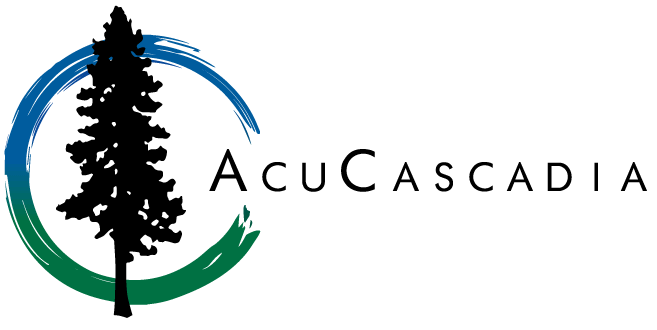Japanese-style direct moxa as performed in our clinic.
The weather is getting cold and wet in Central Oregon and snow is starting to fall in the mountains. That means sweaters, soups, cups of warm tea, and in our clinic- more moxa! Patients often ask us, “I love the smell, but what does moxa do exactly?” We also see a lot of patients that have already had acupuncture in the past with a different provider and it surprises us how many of them haven’t experienced moxibustion before during an acupuncture session. We think of moxa as acupuncture’s lesser known sibling, but it is often just as or more important than acupuncture needles for certain people and conditions.
Moxibustion (or moxa) is a non-invasive treatment technique in Chinese medicine that involves burning mugwort over an acupuncture point or area on the body. Mugwort has been used throughout history as an herbal medicine. Taken internally, mugwort can be used for menstrual issues and abdominal pain. With moxa, however, the mugwort is dried and ground into a spongy golden-colored material. In our clinic, where we practice Japanese-style moxa, we roll this into rice grain-sized pieces to be burned over acupuncture points. Other forms of moxa exist, such as larger moxa sticks, cones, or rolls of moxa that are attached to acupuncture needles.
For our Japanese-style moxa treatment, we put a special salve called shiunko on the skin at the acupuncture point which acts as barrier to protect the skin and prevent burning. Shiunko is an herbal cream with Dang Gui (Angelica) and Zi Cao (Arnebia) in a base of beeswax and sesame oil. It is red in color from the Dang Gui and can also be used to treat minor burns or skin irritations like eczema. On top of the shiunko we place small pieces of rolled mugwort and light it with a specific type of Japanese incense made for moxibustion. Treatment is relaxing; patients feel a gentle warmth and can smell the Tabu wood incense combined with the smell of the moxa burning. Moxa is often applied to 1-4 points and the treatment lasts only a few minutes, usually done while a patient is also resting for acupuncture. We choose Japanese-style moxa vs. moxa cones or indirect moxa sticks for the efficacy, higher quality mugwort and reduced amount of smoke. Even our most environmentally sensitive clients do really well with moxa treatment and appreciate the natural products we use.
So what does it do? In terms of Chinese medicine we see moxa as a tool to strengthen and regulate qi and Blood and to expel Cold (which can often be seen as a pathologic factor leading to pain or other ailments). In clinical practice we have found that patients who are more deficient in nature tend to respond better to moxa on certain points rather than an acupuncture needle. We commonly use moxa in cases of nausea or GI complaints (especially in pregnancy or with chemotherapy), chronic painful conditions, menstrual issues, mental/emotional issues and more.
Several studies have been done using moxibustion. One of the more well known uses is for turning breech babies (1). Studies have also shown how moxibustion can help conditions such as dysmenorrhea (2), osteoarthritis (3), chronic fatigue syndrome (4) and cancer-related fatigue (5) which are conditions typically associated with pathogenic Cold or deficiency of qi and Blood in Chinese medicine. An international non-profit group, Moxafrica, has also looked at teaching moxibustion in community settings for tuberculosis and long-COVID treatment (6).
Moxibustion has been performed for centuries and while Western medicine doesn’t completely understand the mechanisms of how it works, studies and our clinical experience show that it is an integral part of acupuncture treatments for certain people and conditions. Please reach out to us if you have more questions on how acupuncture and moxa may help you!


